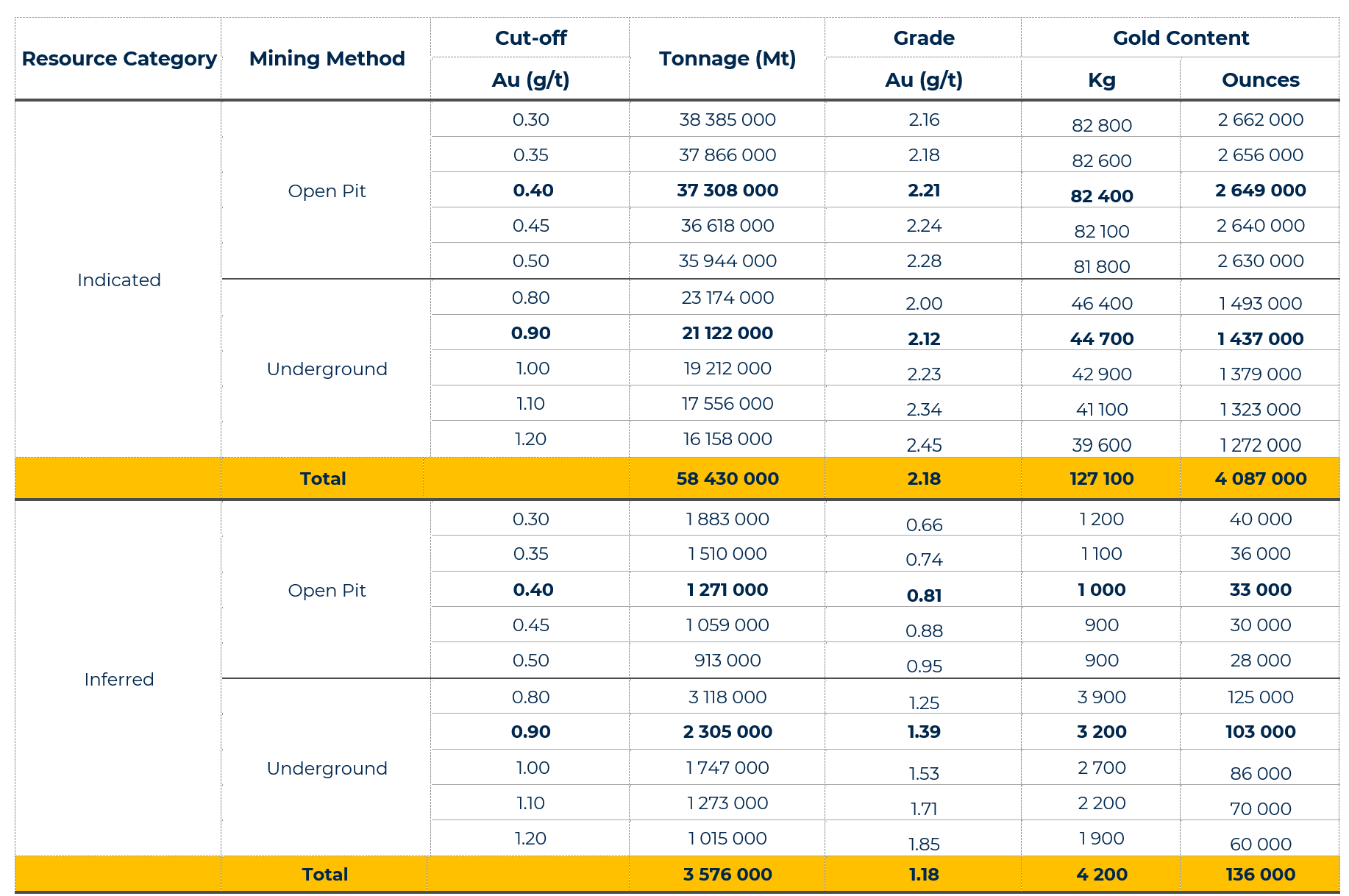EXPLORATION AND GEOLOGY
Ikkari was discovered using systematic regional exploration that focused on geochemical sampling of bedrock/till interface through glacial till deposits of 5 to 40m thick. No outcrop is present, and topography is dominated by low-lying swamp areas. In the Ikkari area, a single anomalous base of till sample of 0.2ppm Au was followed up with infill sampling to a 50 x 25m grid, and a small cluster of anomalous samples up to 1ppm Au was identified. The first drill hole into this geochemical anomaly (hole 120038) was drilled in April 2020 and assayed 54m grading 1.5g/t Au from 25m, under 13m of glacial till cover material. Follow-up drill hole intercepts demonstrated very broad mineralised zones with a high-grade component over an initial strike length of >500m.
The Ikkari deposit occurs within rocks that have been regionally mapped as 2.05-2.15 Ga old Savukoski group greenschist-metamorphosed mafic-ultramafic volcanic rocks, part of the Central Lapland Greenstone Belt (CLGB). Gold mineralisation is largely confined to the structurally modified unconformity between Savukoski and Kumpu groups strata. The two units are complexly interleaved, the result of early low angle thrusting and folding and subsequent upright folding and shearing.
The mineralised zone is bounded to the north by a steeply N-dipping cataclastic zone and is closely associated with intercalations of Kumpu sediments within the Savukoski komatiite-dominated strata he mineralised zone is overprinted by a complex history of hydrothermal brecciation, the latest stages associated with a second phase of high-grade gold mineralisation.
MINERALISATION
Within the mineralised zone, sedimentary slivers are interleaved with komatiite-dominated strata and these are mantled by Fe-metasomatic halos, which enclose the bulk of the Au resource. The main mineralised zone is strongly altered and characterised by intense veining and foliation that frequently overprint original textures. An early phase of finely laminated, grey ankerite/dolomite veins is overprinted by stockwork-like irregular siderite ± quartz ± chlorite ± sulphide veins. These vein arrays are often deformed with shear-related boudinaging and in situ brecciation. Magnetite and/or haematite are common, in association with pyrite. Hydrothermal alteration commonly comprises quartz-dolomite-chlorite-magnetite (±haematite).
Gold is hosted by disseminated and vein-related pyrite, frequently occurring as ~1mm visible gold grains. Multi-phase breccias are well developed within the mineralised zone, with early silicified cataclastic phases overprinted by late, carbonate- iron-oxide- rich, hydrothermal breccias which display a subvertical control. All breccias frequently host disseminated pyrite, and are often associated with bonanza gold grades, particularly where magnetite or haematite is prevalent. In the sedimentary lithologies, albite alteration is intense and pervasive, with pyrite-magnetite (± gold) hosted in veinlets in brittle fracture zones.
NOVEMBER 2023 RESOURCE ESTIMATE

The Qualified Person for the 2023 Ikkari Mineral Resource estimate is Mr. Brian Thomas, P.Geo. B.Sc, an independent QP, as defined under NI43-101 and an employee of WSP Canada Inc. based in Sudbury, Ontario, Canada. The effective date of the 2023 Mineral Resource Estimate for Ikkari is 24th October 2023. The Mineral Resource Estimate at Ikkari is interpolated using Ordinary Kriging (OK) and is reported both within a Whittle optimized open pit shell and as a potential underground operation outside that. Underground mineral resources are constrained within the estimation domains to meet the RPEEE criteria for UG mining. The Mineral Resource Estimate at Ikkari is reported using a cutoff grade of 0.4g/t Au for mineralisation potentially mineable by open pit methods and 0.9g/t Au for mineralisation potentially extractable by underground methods. The open pit and underground cut off-grades are calculated using a gold price at $1700 per ounce; 95% Au Metallurgical recovery; open pit mining costs at $2.9/t; underground mining cost at $29/t; process costs at $11.3/t; G&A, Rehab and Closure $4.8/t and a royalty of 0.75%. The calculated cutoff grade is rounded up to 0.4g/t for reporting. The calculated underground cutoff grade is rounded up to 0.9g/t. The results of the updated Mineral Resource Estimate are set forth in an independent technical report prepared in accordance with National Instrument 43-101 Standards of Disclosure for Mineral Projects (“NI 43-101”) which is available on SEDAR
